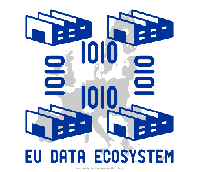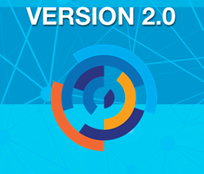Rasta 253 rezultatai (-ų)
Skip results of view Duomenų istorijos

- Data Story
Today, almost all European countries now have an Open Data portal, and across the continent these portals are becoming more advanced, being used more frequently and creating more benefits for societies. Citizens have come to rely on services that have been built using data published through data portals. From bus times to weather data to crime figures, data published on Open Data portals is having...

- Data Story
Open Data is a valuable source for solving civic problems, improving transparency and closing the gap between local government and citizens. The World Council on City Data introduced 17 different themes including around 100 indicators relating to the standardisation of city data. The huge amount of data that cities gather can help solve local problems more efficiently. More cities are starting to...

- Data Story
The European Commission published the final results of the European Data Market study. The study presents the findings of the monitoring tool on data workers, companies, users and markets among others. The findings will feed into further developing the Digital Single Market in the EU as data is a catalyst for economic growth, innovation and digitisation across all economic sectors, particularly...

- Data Story
The European Data Portal harvests the metadata of Public Sector Information available on portals, both national, regional and local, throughout Europe. Currently there are 74 catalogues which are harvested, with a total amount of over 660,000 datasets available on the European Data Portal. These datasets are divided over 13 data categories. But what are the most popular datasets? An overview of...

- Data Story
Creating a business friendly environment for existing small and medium-sized enterprises (SMEs) and potential entrepreneurs is one of the European Union's main objectives. Also on a national level, having a favourable business climate is often seen as an important factor to create employment and to drive economic growth. What can Open Data tell us about business climates in Europe? This dataset...

- Data Story
The impact of Open Data is undeniable. The digital economy revolves around Data, with (Open) Data being the new raw material. European countries are aware of Open Data and the promises it holds, and are positioning themselves to exploit this new raw material. Public administrations are opening up their data, Open Data portals are expanded with new features and more national and local governments...

- Data Story
Welcome to version 2.0 of the European Data Portal! The European Data Portal is continuously developing new content and features. Version 2.0 went live on 1 March, with a more user-friendly design, new content and new features. Thank you for all the feedback, suggestions and improvements we have received after the launch of version 1.0 of the portal in February 2016. We are happy to give an...

- Data Story
The European Union has adopted legislation to foster the re-use of Open (Government) Data. The expected impact of this legislation combined with the development of data portals, is to drive economic benefits and further transparency. Economic benefits are primarily derived from the re-use of Open Data. Value is there. The question is how big? The economic benefits have been largely outlined by a...

- Data Story
Governments have a large number of basic data which can be of economic and social value to society. Along those lines, more and more European countries are developing policies to release this data as Open (Government) Data. In 2003, the European Union (EU) adopted legislation to foster the re-use of Public Data in Member States via the Public Sector Information (PSI) Directive 2003/98/EC, which...

- Data Story
With the World Climate Conference taking place in Bonn these day, the question of renewables comes once again to the fore. Renewable energy is a game changer, as it alters the dependency on fossil fuels and brings in more sustainability and innovation. The European Union Renewable Energy Directive sets forth a binding target of 20% final energy consumption from renewable sources by 2020. EU...
